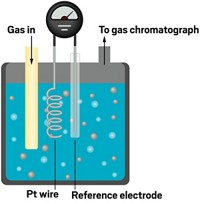Advertisement
Grab your lab coat. Let's get started
Welcome!
Welcome!
Create an account below to get 6 C&EN articles per month, receive newsletters and more - all free.
It seems this is your first time logging in online. Please enter the following information to continue.
As an ACS member you automatically get access to this site. All we need is few more details to create your reading experience.
Not you? Sign in with a different account.
Not you? Sign in with a different account.
ERROR 1
ERROR 1
ERROR 2
ERROR 2
ERROR 2
ERROR 2
ERROR 2
Password and Confirm password must match.
If you have an ACS member number, please enter it here so we can link this account to your membership. (optional)
ERROR 2
ACS values your privacy. By submitting your information, you are gaining access to C&EN and subscribing to our weekly newsletter. We use the information you provide to make your reading experience better, and we will never sell your data to third party members.
Microfluidics
Electrochemistry measures enzyme rate acceleration in nanodroplets
Turnover rate is as much as 100 times as fast in nanodroplets as in bulk solution
by Celia Henry Arnaud
June 20, 2021
| A version of this story appeared in
Volume 99, Issue 23

Enzymes are typically studied in bulk solution, but confined environments such as droplets made by electrospray ionization may more closely mimic the natural environment inside cells. Electrospray forms droplets of various sizes, which makes it difficult to quantify how droplet size affects reaction rates. Jeffrey E. Dick and coworkers at the University of North Carolina at Chapel Hill have used gold microelectrodes to electrochemically measure reaction rates of an enzyme in aqueous nanodroplets, enabling them to see how the rates are affected by droplet size (Proc. Natl. Acad. Sci. U.S.A. 2021, DOI: 10.1073/pnas.2025726118). As a model system, they used a flavin adenine dinucleotide–dependent glucose dehydrogenase in a 1,2-dichloroethane emulsion. Individual nanodroplets adsorb to the microelectrode, whose electric field drives the enzymatic reaction via the oxidation of ferrocyanide to ferricyanide, which in turn delivers electrons for enzymatic glucose oxidation and gets reduced back to ferrocyanide. The cycle generates a current until the glucose is used up. The current can be used to determine the enzyme turnover rate, which increases to as much as 100 times the rate in bulk solution as the size of the droplets decreases. The method will allow droplet-by-droplet quantitation of other reactions to see how generalized the phenomenon is. The researchers plan to study whether and how life uses this confinement-based acceleration.




Join the conversation
Contact the reporter
Submit a Letter to the Editor for publication
Engage with us on Twitter